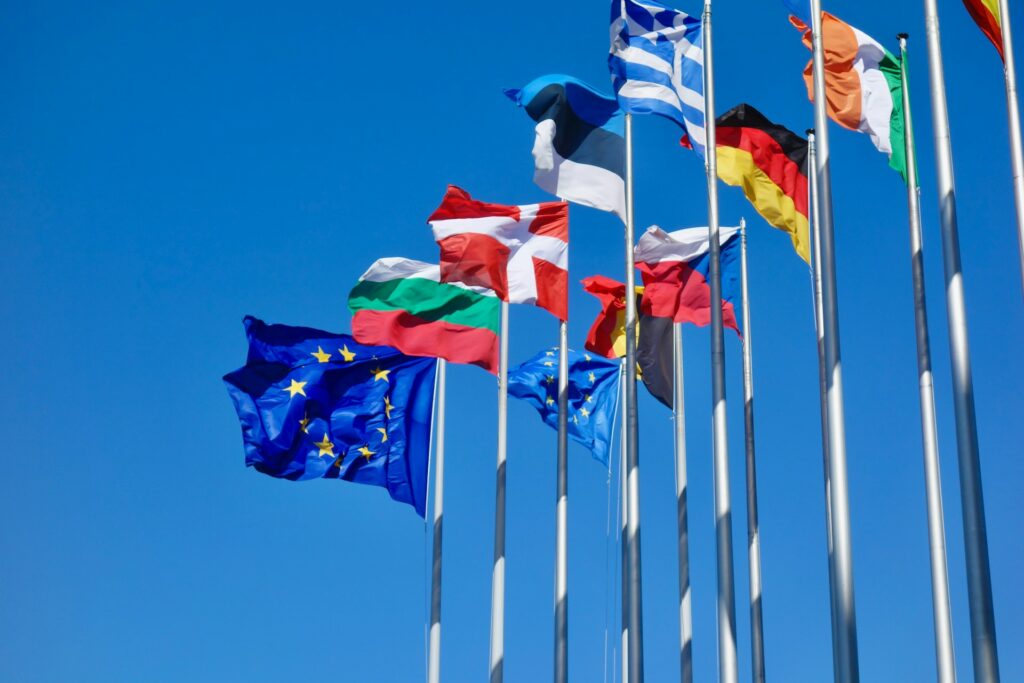Post-truth politics undermines the authority of experts and institutions, fostering a climate of cynicism and sensationalism. How can we counter the ‘sleep of reason’ encouraged by truth denialism?
Ever since post-truth was declared the word of the year by the Oxford Dictionary in 2016, it has become a highly topical issue in the public debate. The decline of trust in expert knowledge and mainstream media, the rise of authoritarian populist movements and figures, and the growth of alternative media do not appear to be marginal phenomena; they rather seem to point to the reconfiguration of the public sphere of contemporary democracies.
While the misuses of truth in politics are nothing new, recent events have prompted researchers to examine the current crisis of truth and reason in western democracies with a newfound sense of urgency.
Understanding the factors leading to this condition cannot exclude a philosophical understanding of the intellectual legacy of the Enlightenment. This article will demonstrate that differing responses to this issue underscore contrasting interpretations of the Enlightenment’s legacy.
The Enlightenment Project
According to the German philosopher Jürgen Habermas, the Enlightenment is not merely a historical epoch, but rather an intellectual “project”, which he designates as “unfinished” due to the persisting issues it endeavours to address, acknowledging the futility of obstructing or reversing its processes.
At the core of the European “project of modernity” lies the question of reason and the commitment to the pursuit of truth in the face of political dogmatism and obscurantism. Against this background, Habermas challenges anti-Enlightenment and post-Enlightenment solutions.
While the former advocates a return to a pre-modern form of thought – thus leading to reactionary and obscurantist forms of politics – the latter argues for the need to overcome the notion of modern reason through a process of relativizing the values of the Enlightenment. Habermas contends that the proposed alternatives are worse than the ongoing, yet to be fully realized, project of modernity itself.
In particular, Habermas takes issue against that European tradition of thought born out of Friedrich Nietzsche’s criticism of metanarratives, arguing that this philosophical tradition leads to a post-Enlightenment, or postmodern, form of relativism. In his analysis of European modernity, Habermas argues that, from Hegel to Nietzsche, the aim of modern reason was “enlightening the Enlightenment about its narrow-mindedness”.
Intellectuals and public figures have been frequently involved in disputes over the threat or promise of European postmodern thought for society.
However, Nietzsche marked the rupture of this tradition because he renounced a revision of the concept of modern reason and bid farewell to the Enlightenment project. According to Habermas, philosophers such as Martin Heidegger, Theodor Adorno, Michel Foucault, among others followed Nietzsche in his search for an “escape route from modernity”.
At this point, one may wonder whether so-called European postmodern thought has contributed to create the cultural environment conductive to the flourishing of deceptive beliefs fabricated by contemporary sophists. In other words, if the criticism of modern reason fostered by post-Nietzschean thought creates a fertile ground for post-truth.
Intellectuals and public figures have been frequently involved in disputes over the threat or promise of European postmodern thought for society. Advocates and opponents have often presented the opposite perspective in a polemic manner: while critics have frequently conceived European postmodern thought as closely linked to intellectual posturing and impostures, postmodern thinkers have accused their critics of dogmatism and authoritarianism.
Reason and its Monsters
This tension has created institutional barriers and mutual distrust, making it very difficult to build a dialogue on this issue. Despite the disagreement, both sides seem to agree about the existence of an unambiguous conceptual demarcation between modernity and postmodernity. But is it possible to draw a clear line between the modern project and its postmodern dismantlement? To resolve this query, I suggest turn to a renowned aquatint created by the Spanish artist and engraver Francisco Goya.
Created between 1797 and 1799 for the Diario de Madrid, “The Sleep of Reason Produces Monsters” depicts a man, who is presumably the artist himself, sleeping at his desk while owls and bats swirl around his head. In the background, ghostly apparitions and strange creatures emerge from the darkness.
The image is often interpreted as a warning against the dangers of ignorance and the consequences of not using reason and rational thought. It suggests that when reason is absent or asleep, the imagination can run wild and give rise to irrational fears and superstitions. Goya’s use of owls and bats, which were commonly associated with witchcraft and the occult, reinforces this theme.
The Enlightenment project can be viewed as the very tension between the ‘dream’ and ‘sleep’ of reason, with both perspectives coexisting in the same image, rather than representing distinct conceptual and chronological instances.
Undoubtedly, the print by Goya has consistently served as a source of inspiration for the prevailing perception of modern reason. However, the caption accompanying the artwork, “El sueño de la razón produce monstruos,” can be subject to multiple interpretations.
In recent years, scholars have pointed out that the titular inscription of Goya can be read as “The dream of reason produces monsters,” a translation that is equally viable as the Spanish term ‘sueño’ can signify either sleep or dream. Understood that way, the monsters are the dreams produced by the looming spectre of reason itself.
The print by Goya presents multiple and potentially conflicting interpretations, and its inherent ambivalence can also offer new insights into the question of the Enlightenment. While the received view portrays modern and postmodern thought as diametrically opposed, Goya’s image suggests an alternative path. The Enlightenment project can be viewed as the very tension between the ‘dream’ and ‘sleep’ of reason, with both perspectives coexisting in the same image, rather than representing distinct conceptual and chronological instances.
From this perspective, dogmatism is not only the result of the “sleep of reason” but also the product of the “dream of reason”, namely the product of a concept of reason that does not acknowledges its limits.
The Incompleteness of European Modernity
The project of modernity cannot thus be reduced to one of the two perspectives but emerges from the productive tension between the two. As previously mentioned, Habermas characterizes the modernity project as “unfinished,” because the challenges it intends to tackle have not yet been resolved.
Nevertheless, resorting to Goya’s image as a heuristic for thinking about modernity, it is possible to interpret Habermas’ “unfinished project” differently. This alternative reading implies that the distinctiveness of the project of modernity lies in its incompleteness.
The alternative concept of the unfinished project of modernity may also offer some valuable insights into how we can approach the issue of post-truth. This interpretation of the project suggests that we should not only be wary about the sleep of reason, namely truth denialism and post-truth cynicism, but also be mindful of how we understand and counteract it, starting from the consideration that there has probably never been a politics of truth, namely an uncontested dream of reason, that we have left behind.
Dr. Marco Piasentier works at the University of Helsinki as a University Researcher in the Academy of Finland Centre of Excellence in Law, Identity and the European Narratives and team leader of the subproject Discovering the Limits of Reason – Europe and the Crisis of Universalism.
Article is part of Eurostorie-series.
Eurostorie-articles in Finnish.
Eurostorie-artiklar på svenska.
Article image: Pexels / Pixabay





